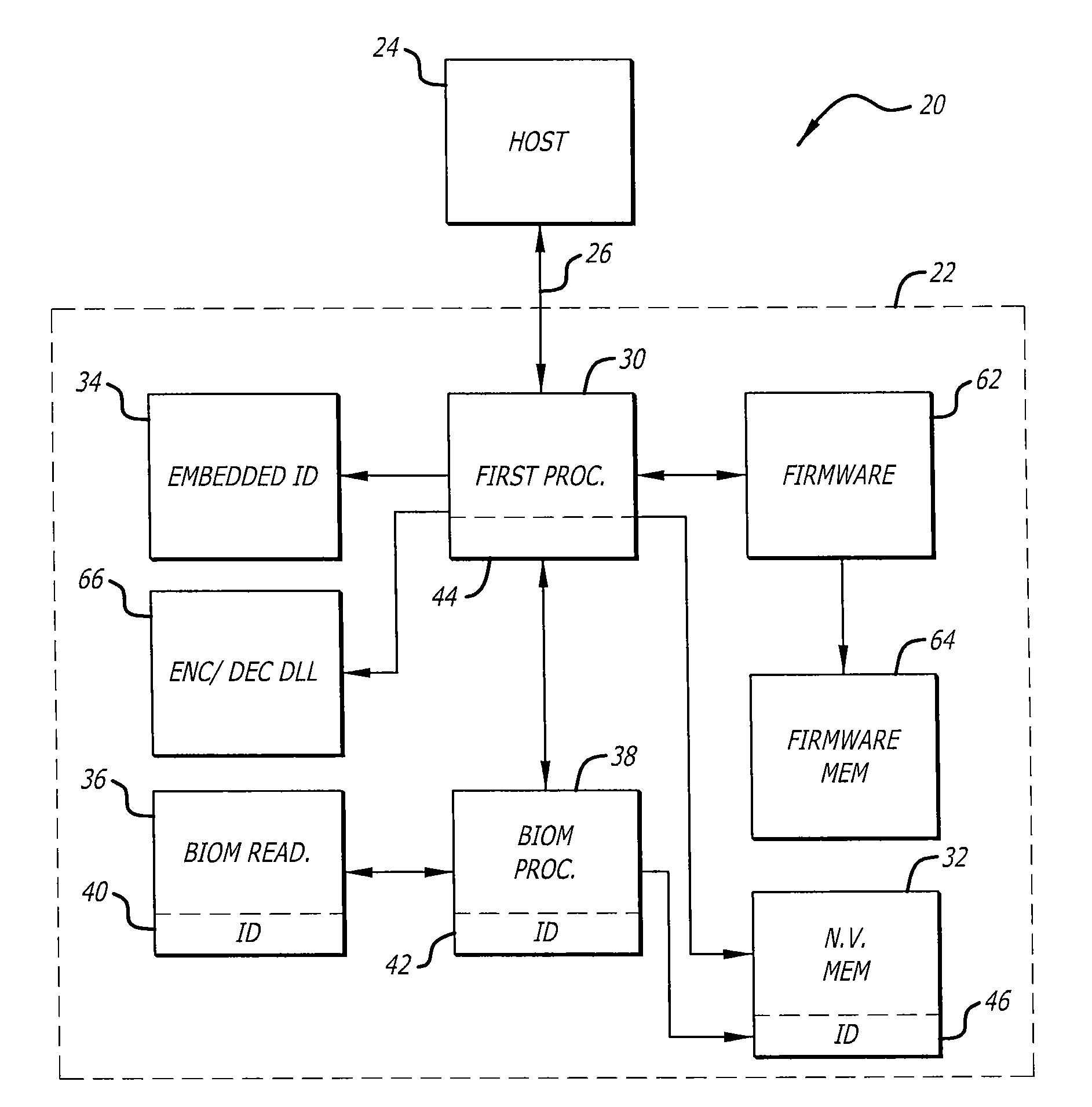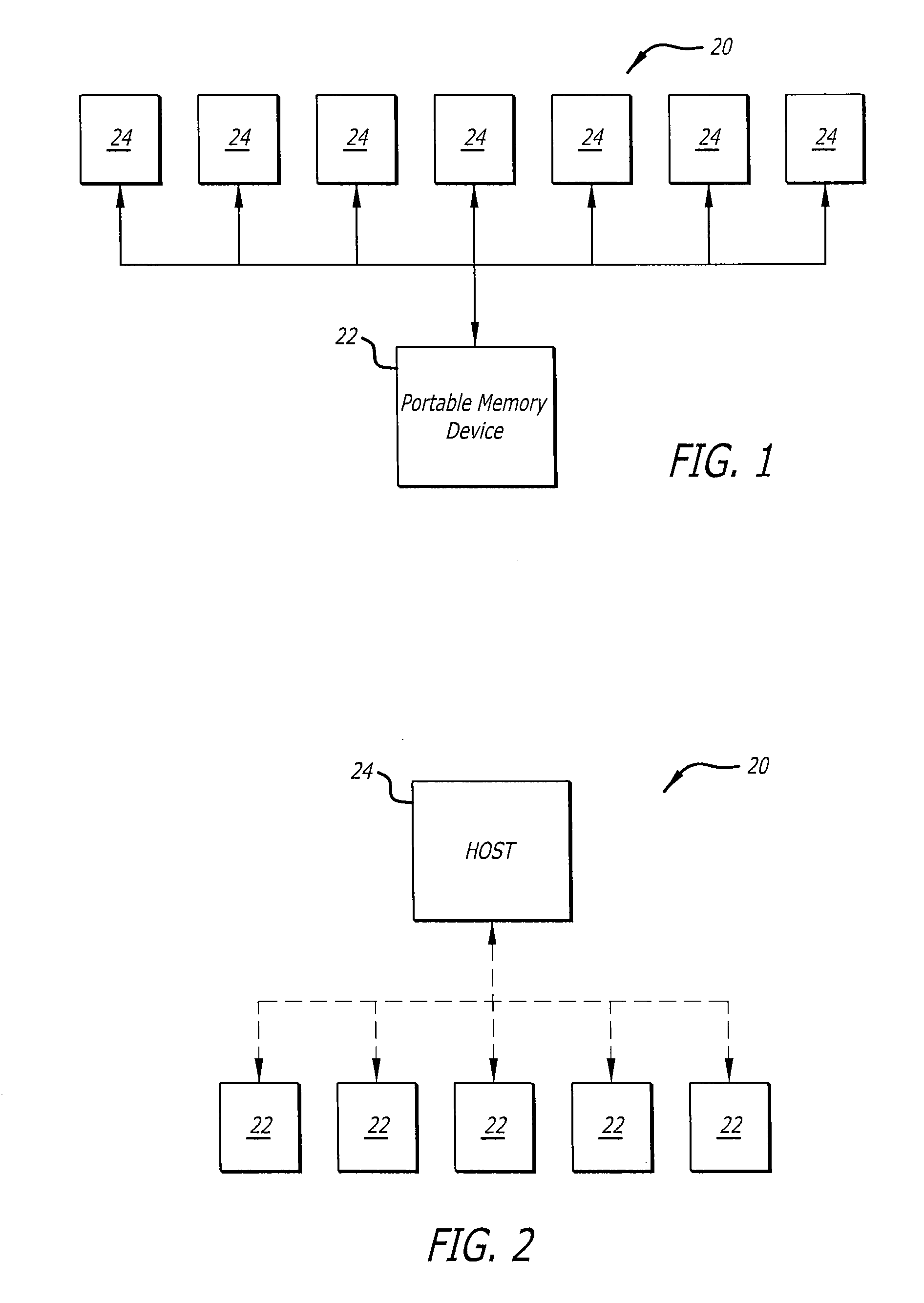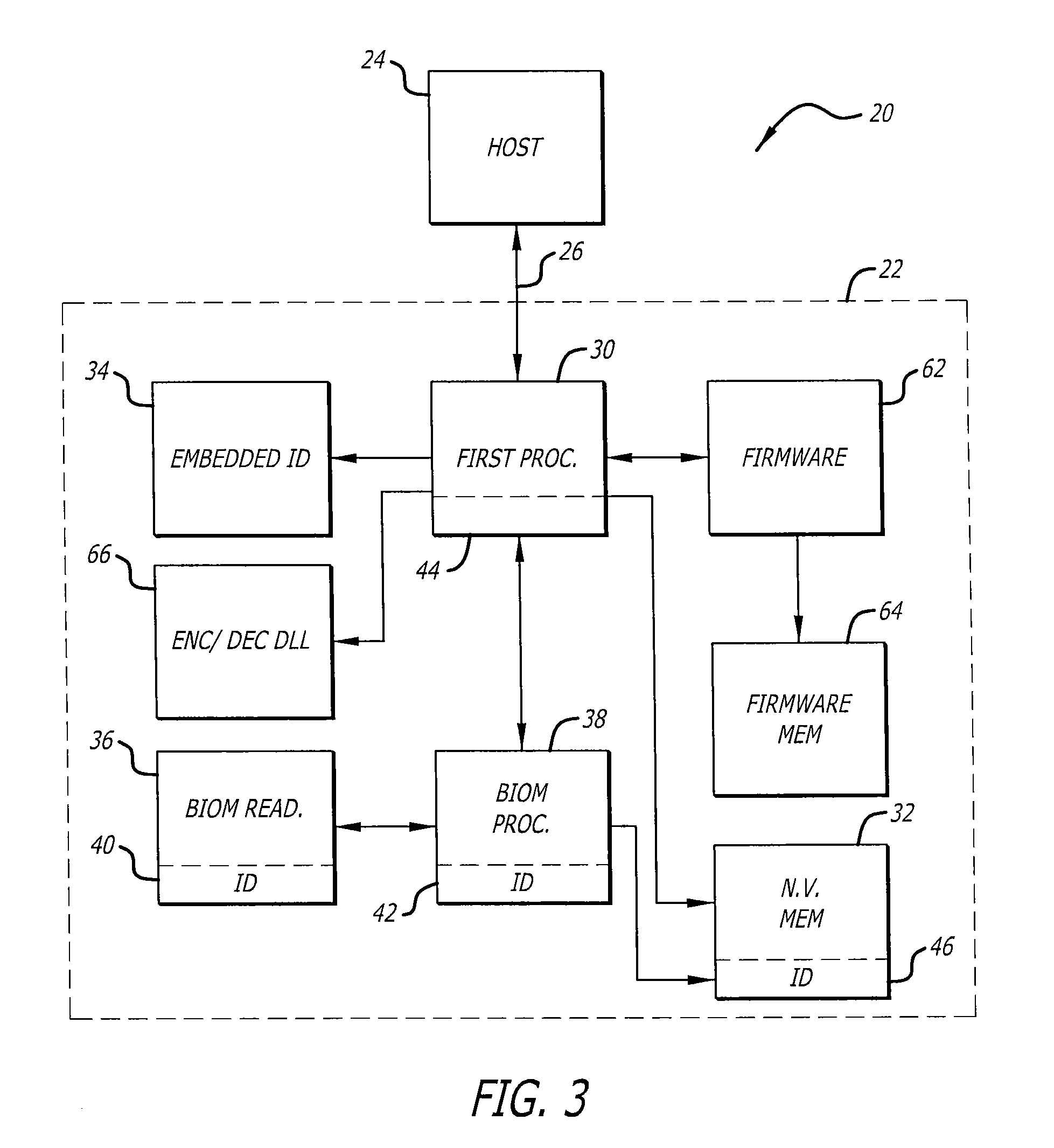The practical difficulties of the coordinated management of different systems and components for the security of data, as well as systemic failures to protect against both known and previously unrecognized security
attack approaches, contribute to the vulnerabilities to security breaches of systems, components, and networks.
Managing the security features for all components of a
system involved in transporting data, such as local computers, data storage devices, data transport devices, host computers, networks, main frames for example, can be a difficult task.
Further security difficulties arise with the transport of sensitive data on portable, non-volatile data transport devices, such as laptops, flash drives, portable hard drives, and others.
Such devices are easier targets of theft and are easily lost due to their small size.
Portable devices are not subject to a secure environment as are main frames and desktop devices kept in secure office buildings or laboratories and are therefore much more easily stolen.
Even if the portable data transport device was lost for a reason other than theft, the finder of that device may desire to recover the data on it.
While it is likely difficult to avoid a certain level of theft or loss just due to the small size and portable nature of the data transport devices themselves, it would be desirable to make retrieval of the data stored in such portable devices more difficult, if not impossible.
As with other data transport devices,
data security has become a critical issue with flash drives, particularly when data is being physically transported.
Thousands of
laptop computers and flash drives are stolen every day.
Sometimes data thieves set out to steal specific confidential data, which becomes compromised when it falls into the wrong hands.
Theft of such data can wreak havoc on trust, reputation, and the ability to carry out a mission.
Even the
perception of a data assault may be damaging, sometimes irreparably.
While personnel who are in charge of such portable data transport devices may undergo specific training on avoiding
data theft, such efforts are likely to yield limited improvement in keeping data secure.
Additionally, those skilled in the art have directed efforts toward making data more difficult to retrieve from such data devices.
While patches may be successful for the particular
vulnerability, they add complexity to a
system and yet another
vulnerability may appear and require further security efforts.
Using security features in a portable data transport device that would require a host computer to have an atypical configuration, such as requiring the existence of certain
security software to be run in addition to the
Microsoft Windows®
operating system for example, is undesirable due to the need to transport data to many different locations and the possible
unavailability of such
security software in the configuration of the host computer.
However passwords can be cracked by unauthorized users.
Also, passwords are frequently based on a birth date, phone number, or some other some other available information that is simple to guess and are therefore not secure.
Even a complicated, randomly generated
password can often be readily stolen.
Password-based data accessing systems based on such vulnerable passwords are thus vulnerable to criminal
attack with
resultant risk and damage to industry and the economy and even to people's lives.
Successfully using encryption alone to ensure security can be a challenging problem.
While strong ciphers can be devised, a single error in the design of the
system or the execution of encryption can allow successful attacks.
Also, having the key in the same location as the encrypted data can provide a
vulnerability unless a further protection measure is taken.
Simply encrypting data is restrictive in that there may not exist any convenient manner to
handle the portability of the data while maintaining the integrity and security of the data.
If the encrypted data is transported to another host computer, there does not exist a convenient process to decrypt the data for use while simultaneously
safeguarding data integrity and
data security.
Carrying the decryption key with the data is unwise due to possible theft and places more of a burden on the person transporting the data storage device.
Encryption also offers a higher level of security to data; however its effectiveness can likewise be compromised when it is simply included as an additional
security layer in an already-existing computer or network system.
At the same time, making that process more convenient may compromise the security provided by the encryption technology.
A high degree of security is provided by such systems; however they too have vulnerabilities.
Unfortunately, some such biometric
authentication systems can also be rendered ineffective by various means, such as by physically swapping components on a data transport device, or by resetting the
operating system, or by other means.
As one example of a vulnerability, a
laptop computer may have a biometric
fingerprint reader installed in the computer that denies access to use of the computer unless the
fingerprint of the user attempting to access the computer matches a
fingerprint stored in a data base in the
laptop computer.
While these security systems can provide a degree of security over stored data, each fails to establish a comprehensive
security system.
Many systems remain particularly vulnerable to basic Trojan [horse] attacks for obtaining passwords and encryption keys, thereby permitting complete conversion of the security systems to support inappropriate access to and modification of the stored data.
Furthermore, these systems by themselves may provide no protection against the execution of user-mode programs that may
exploit vulnerabilities in the
operating system to
gain unlimited root or administrator control over the operating system.
Adding one or more of these security systems to an already-existing system can increase complexity and cause unrecognized security vulnerabilities while obtaining only a small incremental increase in security.
 Login to View More
Login to View More  Login to View More
Login to View More 


